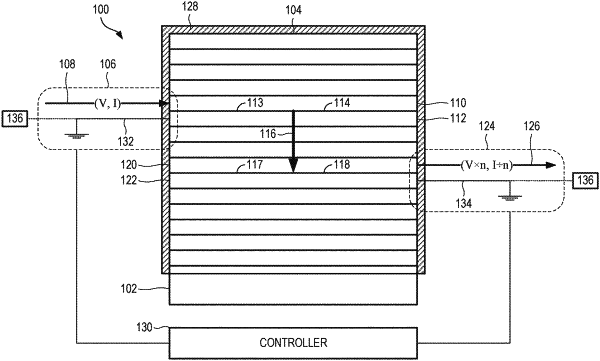| CPC H01L 31/173 (2013.01) [H01L 31/024 (2013.01); H01L 31/02019 (2013.01); H02M 7/003 (2013.01)] | 20 Claims |

|
17. A bi-directional electrical power converter, comprising:
a substrate;
a plurality of layers disposed on the substrate;
first circuitry configured to deliver a first electrical signal;
a first semiconductor junction coupled to the first circuitry and configured to produce first light in response to the first electrical signal, the first semiconductor junction being formed at an interface between a first pair of adjacent layers of the plurality of layers;
a second semiconductor junction configured to absorb at least some of the first light, the second semiconductor junction being formed at an interface between a second pair of adjacent layers of the plurality of layers;
second circuitry coupled to the second semiconductor junction and configured to produce a second electrical signal in response to the absorbed first light, the second electrical signal being substantially proportional to the first electrical signal and being electrically isolated from the first electrical signal, the second circuitry further configured to deliver a third electrical signal, the second semiconductor junction further configured to produce second light in response to the third electrical signal, the first semiconductor junction further configured to absorb at least some of the second light, the first circuitry further configured to produce a fourth electrical signal in response to the absorbed second light, the fourth electrical signal being substantially proportional to the third electrical signal and being electrically isolated from the third electrical signal; and
a controller coupled to the first circuitry and the second circuitry, the controller configured to switch between a first configuration, in which the second electrical signal is produced in response to the first electrical signal, and a second configuration, in which the fourth electrical signal is produced in response to the third electrical signal.
|